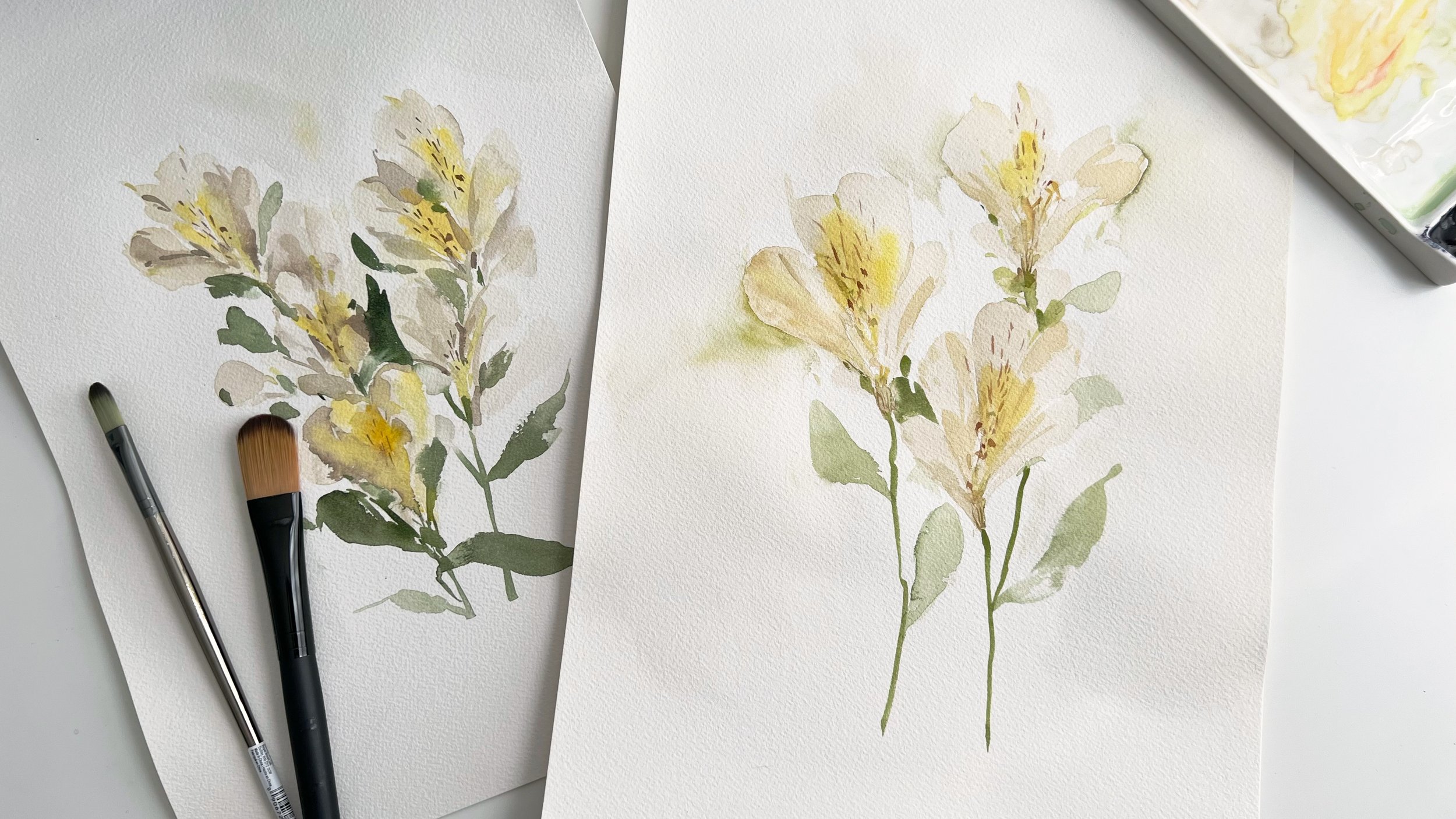How NOT to Paint Loose Flowers
One of the most popular search terms related to watercolor painting is “watercolor flowers”. I did some research on google and I think this is an accurate statement but I’m not saying this because I’m in disbelief. I believe it. Watercolor flowers are beautiful and it’s one of the first subjects I tried to paint when I started.
But I’ll be honest here: I am not good at them. I’ve tried and tried. Even my mom told me once after seeing one of my attempts: “there is no life in your flowers”. Ouch. But it was true.
I’m not going to say that I cant be good at them. If I keep practicing, I know I would improve. I believe this of anything and for anyone. You can do anything as long as you keep learning, iterating, and trying.
But, and this is the key, you must actually care about improving. You have got to actually enjoy the act of practicing whatever subject it is you’re trying to paint.
For me, the interest is what is missing with painting loose florals. And I don’t mean I don’t care about painting flowers at all. It’s painting flowers as the main subject, big and loose, with leaves and all the other stems, buds, and sprays you see when you google “loose watercolor flowers”.
When I make an attempt or feel inspired to try, the initial desire is there. But for some reason, because I can’t make sense (or don’t want to) of all the forms and shadows I see, I lose interest and focus, and the painting reflects that. In fact, often times, my loss of focus results in overworking instead of stepping back, oddly enough!
I don’t believe in practicing watercolor by painting subjects I’m not interested in. That doesn’t make it fun, and I’m not going to learn as quickly as if I painted something I actually feel invested in learning how to get better at.
I do believe in giving every subject a try (or two), especially if there’s a curiosity there. But if it doesn’t feel right, then it’s not really helpful make repeated attempts at the painting - which I have definitely done in the past.
Painting loose florals feels like I’m “trying on” a style that doesn’t quite fit. That being said, there is something to be learned from all painting attempts. So I’m here to share how not to paint loose florals gleaned from my recent personal painting attempts.
How NOT to Paint Loose Flowers
Relying too much on your reference
I paint from reference, both photos and real life, and one thing is for sure - you get a lot of visual information. I’ve gotten much better at picking and choosing what to include and what to omit when I’m painting…but not with flowers.
With flowers it’s especially difficult for me to simplify what I’m seeing, and I see it all. Especially the composition of how the flowers are arranged. I tend to want to put each flower in exactly the same place that I’m seeing it.
Often times, when I follow the reference photo too closely, it makes for awkward compositions and the green leaves always seem to look strange or like there aren’t enough or maybe there are too many. The greenery part of the flowers always gets me.
It appears that in successful loose flower paintings there is much more liberty - in fact, it almost feels like one would need to create a new “arrangement” on the paper for a balanced composition. And I am certainly not a good floral artist in that sense.
Using brushes that are too small
Bigger brushes (and bigger paper) are key to painting loose flowers. This time, I tried oversized brushes and it did show me that I could paint looser flowers that way. And in fact, that was really fun and freeing.
Small brushes are great for the smaller details, but if I were to try and paint loosely with a small brush, it would instantly make the painting tighter.
To help define a “big” brush, I was using a Size 12 Filbert.
I will certainly be adopting this approach in the future to other paintings that I want to keep loose. And as a P.S. I really enjoyed using a filbert brush for the painting. It creates some beautiful marks!
Putting in too much detail
Watercolor paintings tend to be painted from light to dark and broad to more detailed. By the time I reach the detail-adding stage, I struggle with deciding how much detail to add and when to stop. And it’s especially bad with flowers.
There are so many folds and shadows and spots and stamens, it can be hard to decide what should be included. So I put in way too much and I put detail everywhere, evenly sprinkled throughout. What happens to my paintings is that there is no focus point, it feels like the eye doesn’t know where to go or where to rest. At least that’s my own self-critique.
I think if I were to try and improve, one of the main things I’d need to do is learn how to make decisions around where to add detail and what details to add to create focal points and interests for the flowers.
Perhaps over time, I’ll practice flowers here and there as I feel inspired and find my own way to interpret them - in a style that works for me. But, it was fun ‘trying on’ a different approach, and getting some painting practice time in.
If you want to see a video of my flower practice, I posted it here on YouTube:
Want to give these flowers a try?
Here’s a link to the original source for the reference photo I used.



